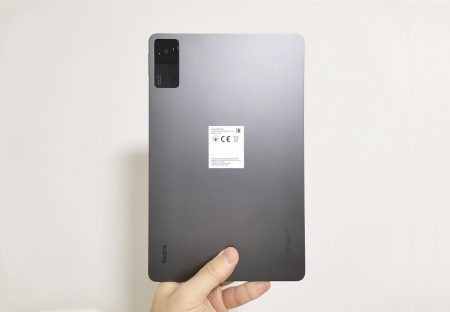Benchmarking
AnuTu Benchmark
Xiaomi Poco Pad – AnTuTu 10.2.6 Benchmark Test Results | |
AnTuTu Score: 509141 | |
CPU Score: 178150 | |
CPU Mathematical Operations | 29548 |
CPU Common Algorithms | 39469 |
CPU Multi-Core | 109133 |
GPU Score: 60856 | |
Seasons – Vulkan | Not Supported |
Coastlline2 – Vulkan | 60856 |
MEM Score: 125872 | |
RAM Bandwidth | 19098 |
RAM Latency | 39715 |
ROM APP IO | 15969 |
ROM Sequential Read | 9069 |
ROM Sequential Write | 9803 |
ROM Random Access | 32218 |
UX Score: 144263 | |
Data Security | 22503 |
Data Processing | 20896 |
Document Processing | 6409 |
Image Decoding | 29170 |
Image Processing | 7390 |
User Experience | 38923 |
Video CTS | 3500 |
Video Decoding | 15472 |
Video Editing | Not Supported |
Geekbench 6: Test Results
Poco Pad (8GB/256GB) Geekbench 6.0 Score | |||
1036 Single-Core Score | 3001 Multi-Core Score | ||
Single-Core Performance | |||
Single-Core Score | 1036 | ||
Integer Score | 1072 | ||
Floating Point Score | 973 | ||
File Compression | 938 | ||
Navigation | 991 | ||
HTML.5 Browser | 1268 | ||
PDF Render | 1332 | ||
Photo Library | 1034 | ||
Clang | 1060 | ||
Text Processing | 1090 | ||
Asset Compression | 1136 | ||
Object Detection | 874 | ||
Background Blur | 908 | ||
Horizon Detection | 1292 | ||
Object Remover | 627 | ||
HDR | 1153 | ||
Photo Filter | 902 | ||
Ray Tracker | 966 | ||
Structure from Motion | 1114 | ||
Poco Pad (8GB/256GB) Geekbench 6.0 Score | |||
1036 Single-Core Score | 3001 Multi-Core Score | ||
Multi-Core Performance | |||
Multi-Core Score | 3001 | ||
Integer Score | 2914 | ||
Floating Point Score | 3170 | ||
File Compression | 1476 | ||
Navigation | 3343 | ||
HTML.5 Browser | 3386 | ||
PDF Render | 4524 | ||
Photo Library | 3638 | ||
Clang | 4118 | ||
Text Processing | 1321 | ||
Asset Compression | 5288 | ||
Object Detection | 1917 | ||
Background Blur | 2424 | ||
Horizon Detection | 4444 | ||
Object Remover | 1694 | ||
HDR | 3323 | ||
Photo Filter | 2785 | ||
Ray Tracker | 4542 | ||
Structure from Motion | 4193 | ||
Comparing the results to equivalent devices
3DMark performance assessment:
- Sling Shot: 6205 (OpenGL ES 3.1).
- Sling Shot Extreme: 4793 (OpenGL ES 3.1).
- Wild Life: 3011 (Vulkan).
- Wild Life Stress Test: 3024 (Best loop score), 3015 (Lowest loop score).
3DMark Benchmark test results






Comparing the results of several high-end devices based on the Dimensity 9300 and the Snapdragon Gen 3 chipsets. As mentioned earlier, the hardware of the Poco Pad is more suitable for multimedia applications than for intensive gaming. We also observed that the peak temperature reached up to 37 °C under high resource loading, which indicates an excellent cooling system.
Can the hardware handle graphically intensive games?
The Snapdragon 7s Gen 2 processor is designed specifically for mid-range tablets, but its standout performance shines when combined with Xiaomi’s game turbo software feature, integrated as part of Xiaomi HyperOS.
One of the key ways this software optimizes your device is by identifying non-essential running applications and closing them to free up RAM for gaming. Enhancing performance by increasing CPU and GPU clock speeds, extracting more power while making minimal compromises on resolution. This powerful combination optimizes performance and drastically enhances frame rates when running high-demand, resource-intensive games.
The GAMETURBO menu always runs in the background when accessible while playing games. With it, you can perform advanced tasks such as freeing up additional space, recording the game, monitoring performance, clearing memory, changing your voice, and even streaming your game to a WiFi-supported smart device like a TV.
We have thoroughly tested several high-demand games such as CSR Racing 2, Asphalt 9, and Cover Fire, and we are pleased to report that they performed exceptionally well.
Running Asphalt 9 with GAMETURBO in the background (Screenshots)








